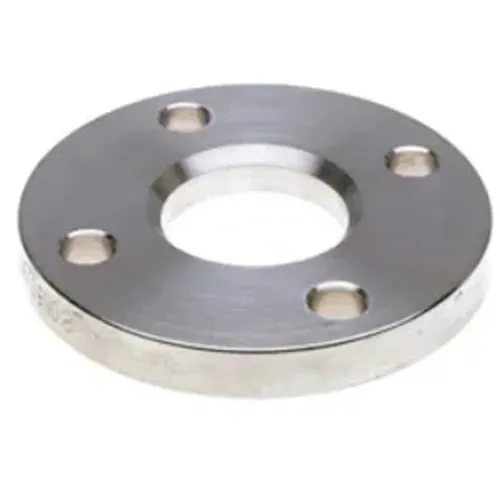-
Cangzhou Yulong Steel Co., Ltd.
-
Phone:
+86 13303177267 -
Email:
admin@ylsteelfittings.com
- English
- Arabic
- Italian
- Spanish
- Portuguese
- German
- kazakh
- Persian
- Greek
- French
- Russian
- Polish
- Thai
- Indonesian
- Vietnamese
- Zulu
- Korean
- Uzbek
- Hindi
- Serbian
- Malay
- Ukrainian
- Gujarati
- Haitian Creole
- hausa
- hawaiian
- Hebrew
- Miao
- Hungarian
- Icelandic
- igbo
- irish
- Japanese
- Javanese
- Kannada
- Khmer
- Rwandese
- Afrikaans
- Albanian
- Amharic
- Armenian
- Azerbaijani
- Basque
- Belarusian
- Bengali
- Bosnian
- Bulgarian
- Catalan
- Cebuano
- China
- China (Taiwan)
- Corsican
- Croatian
- Czech
- Danish
- Esperanto
- Estonian
- Finnish
- Frisian
- Galician
- Georgian
- Kurdish
- Kyrgyz
- Lao
- Latin
- Latvian
- Lithuanian
- Luxembourgish
- Macedonian
- Malgashi
- Malayalam
- Maltese
- Maori
- Marathi
- Mongolian
- Myanmar
- Nepali
- Norwegian
- Norwegian
- Occitan
- Pashto
- Dutch
- Punjabi
- Romanian
- Samoan
- Scottish Gaelic
- Sesotho
- Shona
- Sindhi
- Sinhala
- Slovak
- Slovenian
- Somali
- Sundanese
- Swahili
- Swedish
- Tagalog
- Tajik
- Tamil
- Tatar
- Telugu
- Turkish
- Turkmen
- Urdu
- Uighur
- Welsh
- Bantu
- Yiddish
- Yoruba

Dec . 04, 2024 05:51 Back to list
weld 90 degree elbow
Understanding the Welded 90 Degree Elbow in Piping Systems
In various industrial applications and systems, the need for efficient fluid transportation is paramount. One of the fundamental components used to facilitate this is the 90-degree elbow. Specifically, welded 90-degree elbows are vital in piping systems, enabling smooth transitions between directional changes in a pipeline without disrupting the flow of liquids or gases. This article delves into the significance, types, applications, and considerations associated with welded 90-degree elbows.
What is a Welded 90 Degree Elbow?
A welded 90-degree elbow is a pipe fitting that changes the direction of the pipe by 90 degrees. It is typically used in situations where space is limited or when directional changes are necessary to navigate around obstructions. The welded aspect refers to the method of construction, where two pipes or fittings are joined through welding processes, ensuring a strong and leak-proof connection.
Types of Welded 90 Degree Elbows
Welded 90-degree elbows come in various materials, sizes, and wall thicknesses, which can influence their performance and suitability for different applications
1. Materials Common materials include stainless steel, carbon steel, and PVC. Stainless steel elbows are favored for their corrosion resistance, while carbon steel is often chosen for structural support and high-temperature applications. PVC elbows are lightweight and resistant to chemical corrosion, making them popular in residential plumbing.
2. Dimensions Elbows are available in various diameters, typically ranging from a few inches to several feet. The selection of diameter is crucial, as it must match the dimensions of the connecting pipes to ensure a proper fit.
3. Wall Thickness The wall thickness of the elbow significantly affects its pressure rating. Thicker walls can withstand higher pressures, making them ideal for heavy-duty applications.
Applications of Welded 90 Degree Elbows
Welded 90-degree elbows are extensively used across multiple industries, including
- Oil and Gas In the oil and gas sector, these elbows facilitate the safe transportation of crude oil, natural gas, and other critical fluids. The durability and leak-proof nature of welded construction make them particularly suitable in high-pressure environments.
weld 90 degree elbow

- Water Treatment In water treatment plants, welded 90-degree elbows are essential for routing water through filtration systems, pumps, and treatment vessels. Their reliability helps maintain the integrity of the water supply.
- Chemical Processing Elbows constructed from materials resistant to corrosion are widely used in chemical processing plants. They enable the movement of caustic substances and other chemicals while minimizing the risk of leaks or failures.
- HVAC Systems In heating, ventilation, and air conditioning systems, welded elbows assist in directing airflow through ducts, enhancing efficiency and performance.
Considerations When Selecting Welded 90 Degree Elbows
Selecting the right welded 90-degree elbow involves several considerations
1. Material Compatibility Ensure the material of the elbow is compatible with the substances being transported. For example, using stainless steel for corrosive fluids is crucial to prevent degradation.
2. Pressure Ratings Evaluate the operating pressure of the system and select elbows with appropriate pressure ratings to avoid failures.
3. Installation Practices Proper welding techniques are essential to achieving a robust and leak-proof bond. They must also adhere to industry standards and safety regulations.
4. Cost While welded elbows can be more expensive than their less durable counterparts, the investment may be justified by their longevity and performance in critical applications.
Conclusion
Welded 90-degree elbows are indispensable components in modern piping systems, facilitating the efficient movement of fluids while ensuring structural integrity and safety. By understanding the different types, applications, and considerations for these fittings, engineers and project managers can make informed decisions that enhance the reliability and functionality of their piping systems. Whether in oil, water treatment, chemical processing, or HVAC systems, the significance of a properly selected and installed welded elbow cannot be overstated. In an ever-evolving industrial landscape, these fittings continue to play a crucial role in maintaining seamless operations across various sectors.
Latest news
-
ANSI 150P SS304 SO FLANGE
NewsFeb.14,2025
-
ASTM A333GR6 STEEL PIPE
NewsJan.20,2025
-
ANSI B16.5 WELDING NECK FLANGE
NewsJan.15,2026
-
ANSI B16.5 SLIP-ON FLANGE
NewsApr.19,2024
-
SABS 1123 FLANGE
NewsJan.15,2025
-
DIN86044 PLATE FLANGE
NewsApr.19,2024
-
DIN2527 BLIND FLANGE
NewsApr.12,2024
-
JIS B2311 Butt-Welding Fittings LR/SR 45°/90° /180°Seamless/Weld
NewsApr.23,2024











